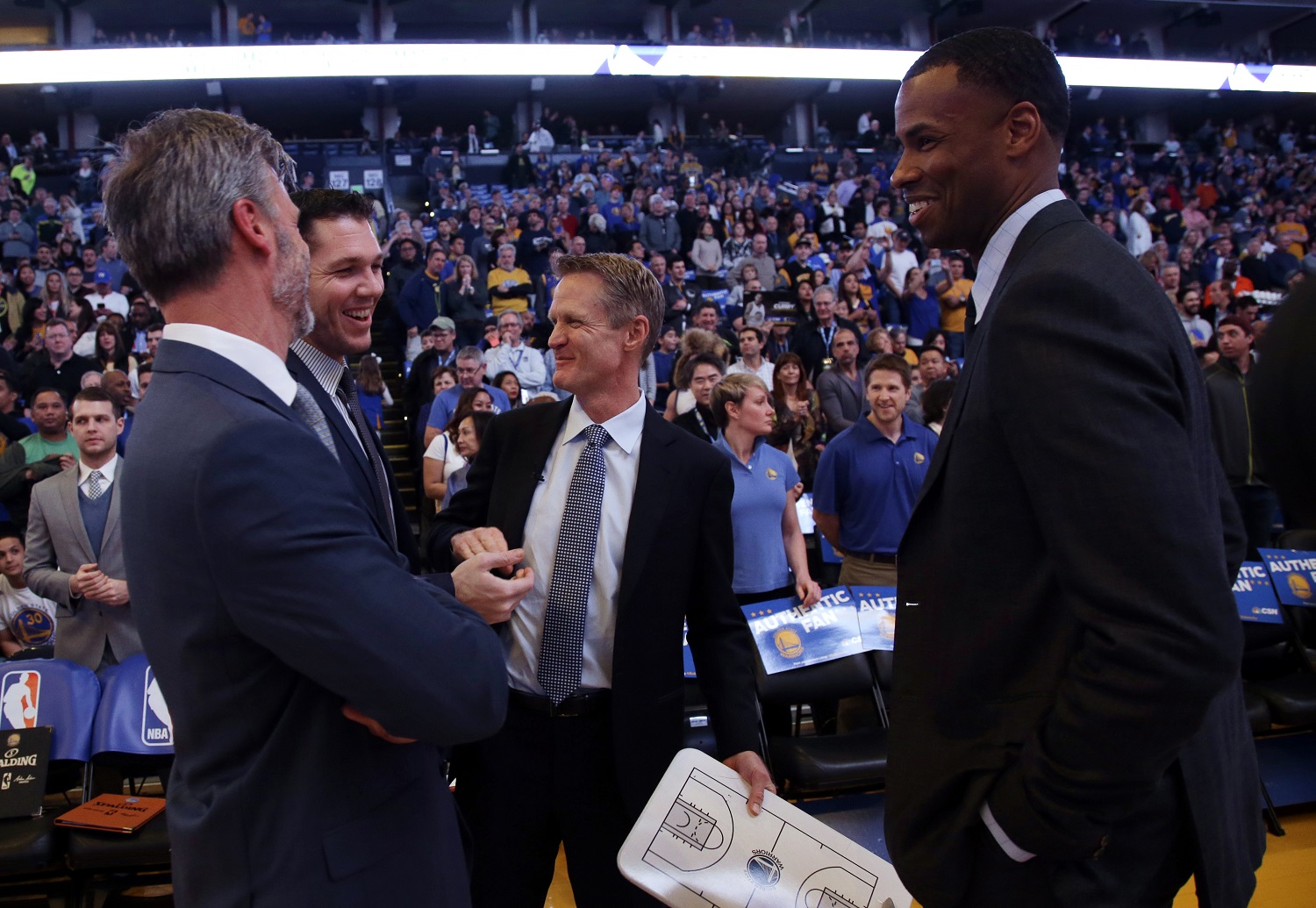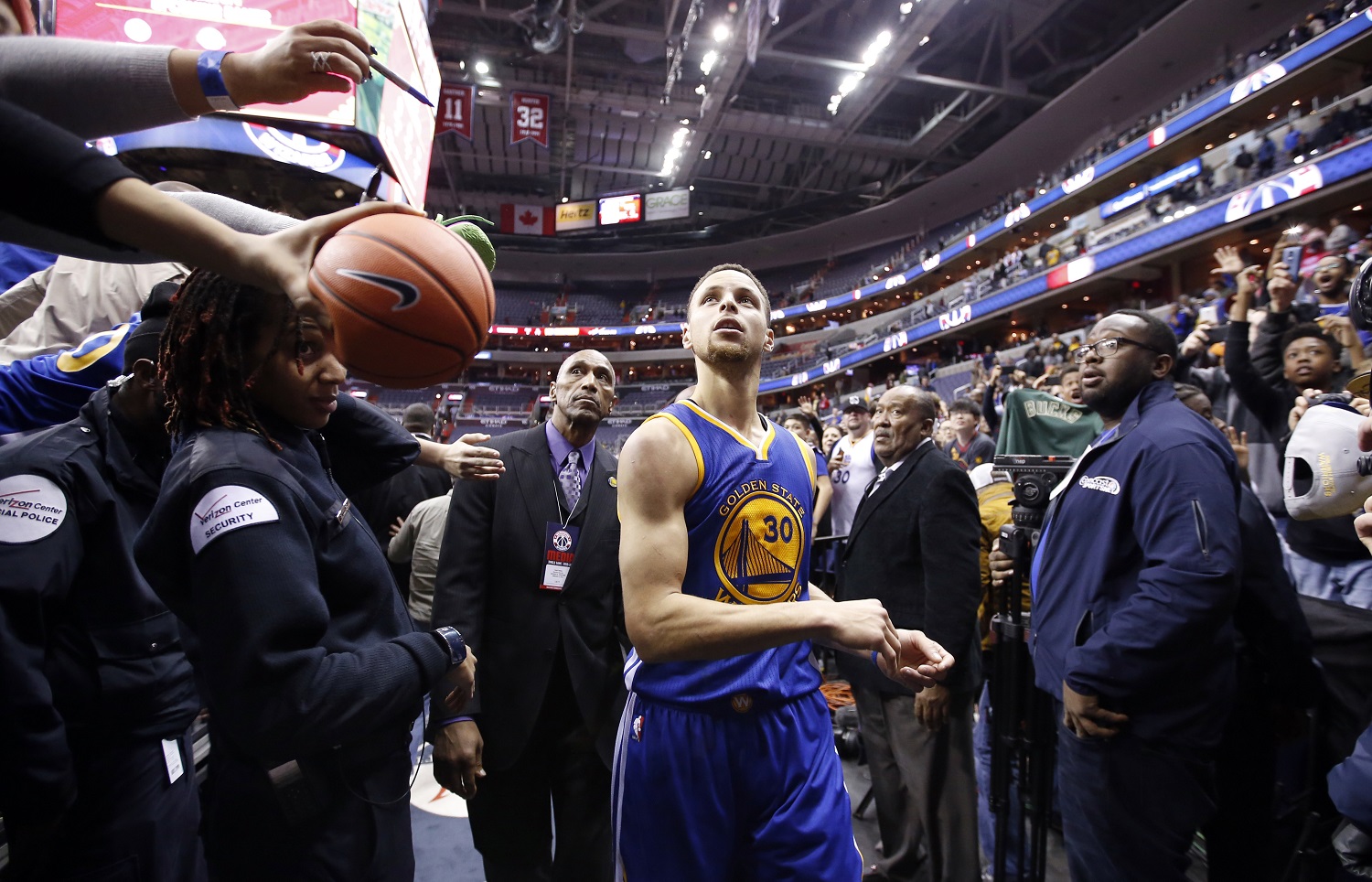WASHINGTON — The NBA season is upon us, and the Golden State Warriors are prohibitive favorites to win their third title in four years. That you read that sentence without flinching is a testament to the not minor miracle that has been the franchise’s turnaround. Had you told anyone — especially a Warriors fan — five years ago that this would be the franchise’s reality, they’d have slapped some sense into you.
To articulate just how profound and unprecedented such a turnaround is in any professional sport, it helps to have a storyteller fully steeped in the history of the subject matter. That’s exactly what the Golden State Warriors’ story has in Erik Malinowski, who breaks down the process of how the Warriors rose from perennial afterthought and laughingstock to a two-time champion and juggernaut of the sport in just five years in his new book, “Betaball: How Silicon Valley and Science Built One of the Greatest Basketball Teams in History”.
In a league that sends more than half its teams (16 of 30) to the playoffs each year, the Warriors made the NBA’s second season just once — once — in 18 seasons leading into the 2012-13 campaign. In the 16 non-lockout-shortened campaigns during that stretch, they won fewer than 40 games 14 times; fewer than 30 games six times; fewer than 20 games thrice. So the fact they’ve averaged a stunning 71 wins over the past three years and come within a minute of three straight titles feels more like paradisal afterlife for a lifetime of suffering than actual, basketball reality.
As a matter of his own pitch process, Malinowski tried to find a historical comparison to what the franchise has accomplished.
“I honestly can’t,” he told WTOP last week. “It was actually one of the things I really wracked my brain during the proposal. We’ve seen teams are very bad and they’re able to turn it around … But they don’t become all-time elite, and it doesn’t happen in five years, basically. I think it’s completely unprecedented.”
What Malinowski is able to do is break down the twists and turns, specifically the nontraditional decision making that led to an organizational sea change. As he details in the book, the combination of constantly seeking places to improve and a willingness to think outside the traditional constraints of NBA business-as-usual were paramount in driving success.
A primary tenet that owner Joe Lacob, who bought the team in 2010, brought with him from Silicon Valley, was to be willing to fire the CEO a year early rather than a year late. In that vein, Lacob was willing to bring in then-assistant general manager Bob Myers even as current GM Larry Riley was making key moves. He was willing to fire popular coach Mark Jackson despite a 51-win season (the most in more than 20 years), and replace him with Steve Kerr.
Both Myers and Kerr shared something else — neither had any direct work experience in the jobs they were hired for. But both had a wealth of knowledge that would help them be successful. Myers had been a player agent for 15 years, so he was keenly aware of the Byzantine intricacies of the NBA Collective Bargaining Agreement.
“This is a guy who understands the transactional world of the NBA, and this is a guy who can grow into the job,” said Malinowski of the Myers hire. “In terms of experience, he actually had a lot of relevant experience.”
That experience allowed him to maneuver contracts to help land key free agents, like Andre Iguodala. Myers had to dump more than $24 million in the contracts of Andris Biedrins, Richard Jefferson and Brandon Rush, eventually packaging valuable draft picks to the Utah Jazz to do so, pulling off the deal at the eleventh hour.
“If you want to blame another team for the Warriors’ rise, you can blame Utah,” said Malinowski. “If the Utah Jazz don’t say yes at that point, we’re probably not talking today.”
That success helped foster the type of environment that led to the super team that resides in Oakland in 2017.
“If there was no Bob Myers, I don’t think Kevin Durant would be on the Golden State Warriors today,” said Malinowski.
Kerr, meanwhile, brought a different kind of attitude to the floor, one that meshed with what Lacob brought to the front office in the beginning of his tenure. A 25-year Silicon Valley veteran, Lacob was also a decadelong Warriors season ticket holder. He watched the fan base, loyal through thick and thin, boo the former owner, Chris Cohan. He knew that everyone in the organization needed to remember why they were there, that working in sports was supposed to be fun.
“They had to rebuild the whole culture,” said Malinowski. “It was this idea of enjoying coming to work. At first they had to make people in the front office and the upstairs believe that. And then they had to make the players believe that.”
That’s where Kerr came in. Sure, there was the free and open offense that led to a game-changing approach to the three-point line. But you don’t get the best available shot until every player buys in to a system that requires selflessness. And you don’t get that buy-in until your players believe in something beyond themselves.
“A lot of that comes from confidence,” said Malinowski. “It comes from happiness. It comes from believing in the culture that has been ingrained here. So a lot of those pieces were in place, but I really feel like Steve coming in was the final piece in that whole puzzle.”
“Betaball: How Silicon Valley and Science Built One of the Greatest Basketball Teams in History” is on sale now.







